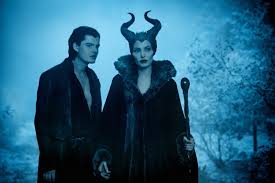REVIEW: Sing No Evil
Sing No Evil
By JP Ahonen and KP Alare
Abrams ComicArts, 181 pages, $24.95
 Translating music, meant to be heard live, and print, meant to be imagined in one’s mind, is a challenging task. When the music is heavy metal, a very visceral sort of sound, the challenge is even harder. As a result, artist JP Ahonen and writer KP Alare are to be commended for trying but fail to achieve their goal. Sing No Evil, translated from NAME, is about music, friendship, love, rock, and sorcery. As a result, it wants to be too many things and falls short on every level.
Translating music, meant to be heard live, and print, meant to be imagined in one’s mind, is a challenging task. When the music is heavy metal, a very visceral sort of sound, the challenge is even harder. As a result, artist JP Ahonen and writer KP Alare are to be commended for trying but fail to achieve their goal. Sing No Evil, translated from NAME, is about music, friendship, love, rock, and sorcery. As a result, it wants to be too many things and falls short on every level.
The book is at its strongest when Ahonen fills spreads with the manic energy that goes into performing before a crowd. The words get out of the way and the pictures tell the story and we can imagine the chords and backbeat. Sprinkled across the book, they come as welcome breaks from a tedious story about a band that can’t get their collective act together even to perform at a local bar. We are meant to feel for Aksel, the guitarist who can’t sing and the stress his perfectionist attitude brings to his band Pekeros. The rest of the band — keyboard player Lily, bassist Kervinen and drummer Bear –cajole, support or scold Aksel. Lily is the most rounded of the characters in the story while there’s little appealing about Aksel. The dynamic should noticeably change when Lily recruits Aydin, the local pizza delivery guy, as their new singer, but he’s wallpaper. Kervinen is a seemingly ageless spiritual guide to Aksel but feels like a stock player.
 Bear, by the way, is a real bear who fights off the urge to hibernate so they can make the band’s dream come true. Why the drummer is a real bear, who doesn’t speak but acts human in every other respect, serves to rob the story of feeling set in our world. And that’s before the demonic forces arrive in the final act.
Bear, by the way, is a real bear who fights off the urge to hibernate so they can make the band’s dream come true. Why the drummer is a real bear, who doesn’t speak but acts human in every other respect, serves to rob the story of feeling set in our world. And that’s before the demonic forces arrive in the final act.
The creators try too hard, stuff too much extraneous stuff into the story, robbing it of any real emotional depth so we wind up caring little for the band members or whether they achieve success or are another failed act.
The artwork and strong sense of color makes the book interesting to look at but just further emphasizes how weak the characters are and overall storyline is. I gather Ahonen is best known for Northern Overexposure, something I am unfamiliar with but I’d be interested in seeing what else he can do. Right now, though, this book is just plain disappointing.




















 The effects are swell, the dragon transformation and climax strong but the underlying motivations are so weak that it really robs the film of the strength of its themes. As a result, this 97 minute story disappoints more than it thrills. Clearly, though, I am in the majority since its worldwide box office is over $750 million.
The effects are swell, the dragon transformation and climax strong but the underlying motivations are so weak that it really robs the film of the strength of its themes. As a result, this 97 minute story disappoints more than it thrills. Clearly, though, I am in the majority since its worldwide box office is over $750 million.















 10 Most Frequently Challenged Library Books of 2013
10 Most Frequently Challenged Library Books of 2013










